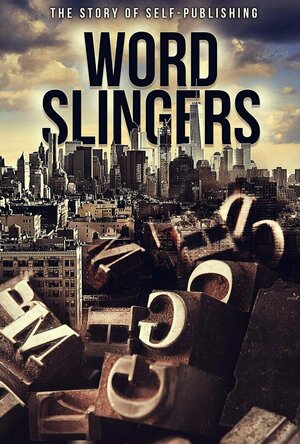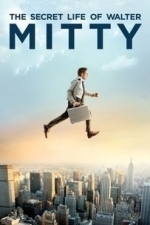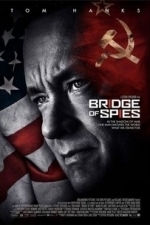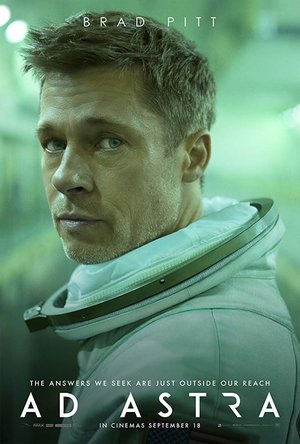
Tracks4Africa Guide
Reference and Travel
App
Welcome to the most detailed travel guide for overland travel in Africa. This offline app offers a...
Bob Mann (459 KP) rated Wordslingers: The Story of Self-Publishing (2021) in Movies
Sep 28, 2021
The democratization of publishing
The internet has brought many advantages to modern life, but perhaps one of the most interesting is the democratization of publishing. No longer is control in the hands of publishing houses, who might glance at and immediately dismiss new ideas in literature. It’s worth remembering that 12 publishing houses turned down J.K. Rowling’s draft for Harry Potter! Now anyone can be creative in writing and self-publish on the web. My own wife – Sue Mann – did just this, self-publishing the WW1 poems and reminiscences of two of her great-uncles. (It’s available from all good bookshops… oh, no…. actually just from here!) Are the poems artistically any good? I have no idea! Will it sell many copies? Clearly not! Was it a personal goal achieved in honouring their memory? Absolutely! Different people want different things from the medium.
Very ‘American’.
It’s probably down to the pioneer spirit, but as a generalisation Americans seem far more ambitious than Brits: or at least, more OPENLY ambitious. Whereas most Brits will quietly get on with building their careers, some Americans will go hell-for-leather towards their vision of “success” no matter the cost: no guts; no glory; and be noisy about it!
But for every J.K. Rowling or Bill Bryson there are several thousand writers who have ‘failed to launch’.
Here we follow two budding authors – one from California; the other from North Carolina – self-publishing their work and seeking sales.
One – Giles A (“Andy”) Anderson – has self-published a seemingly disturbing work called “Vidu” – the first of what he hopes will be a five-part series. He first talks from a ghoulish bookstore, speaking psycho-babble with the requisite hyperbole of an ‘artiste’. (It suggests how the books might read… but perhaps that’s misjudging). It comes then as a surprise when we find he doesn’t live alone in a coffin playing video games on his own, but has a lovely wife and two young and perfectly normal children. So his book is an “off the beaten track kinda book”, but the man seems well-grounded and following his dream in bite-size pieces.
Moral: Avoid the Travel Books
As is often the case though, the documentary homes in on, and spends most of its time with, the other author – Adam Shephard. Shephard is struggling to launch as an author and also – in parallel – wrestling with the Green Card process for his supportive and vivacious Croatian wife Ivana. The problem is that Shephard has written an extended travel blog: ten-a-penny on sites like WordPress.
I read a Forbes article last year that reported that – astonishingly – in a survey 11% of American respondents had never travelled outside of their home state and 40% had never left the country. For such a well-heeled country, the US is incredibly insular. So Shephard’s vision is to encourage youngsters to step outside of their comfort zone and jump on that plane to Guatemala. It’s a fine objective. But does anyone want to listen? And – crucially – is the book any good and commercial enough? As the famous ‘founder of self-publishing’, the late Dan Poynter (to who the film is dedicated) says “You can’t make any money off a travel book”.
The film never goes as far as having either of the featured books critically reviewed: that might have added some extra spice to the story (and possibly provoked some painful reactions). But the piles of unopened boxes in Adam’s clinically white storage facility rather speaks for itself. Since Shephard never seems to do anything by halves, the boxes are piled high and thus the fall from grace is hard, long…. and absolutely riveting. (Ivana’s support and love in such difficult circumstances is commendable: he is a truly blessed man).
Jaw-dropping Walmart scene
At least at the start of the film, Adam’s self-belief and confidence in himself is infectious. The peak of his bravado, and a jaw-dropping highpoint in the movie for me, was a scene filmed in Walmart. Shephard, in a case of “reverse shoplifting”, sneaks HIS books onto the bookshelves of Walmart. What happens when they then try to buy one? It’s a real eye-opener and worth watching the documentary for in its own right.
It’s an interesting legal position: if Walmart were to be upset about this scene, what on earth could they charge them with!? Littering?
Highs and lows.
Shephard seems to have talent as a speaker, and it struck me that he would be genuinely suited to a job in sales. In the movie we see him performing self-confidence-building pitches to young people (and, boy, could we sometimes use that in the UK post-Brexit). A few books sold. But another event barely breaking even. The pattern becomes familiar and, in a way, rather tragic.
There are unexpected highs and lows for Adam and Ivana along the way though, unrelated to the publishing story, and the filmmaker skillfully weaves them into the narrative to good effect.
Thought-provoking.
I watched this on a whim and thought I’d probably switch off after 10 minutes. Documentaries normally are not my thing! But no. It had me gripped to see how things would turn out – like watching a slow-motion car crash! The journey was well-worth the ride: a real page-turner you might say.
Loz Hughes (80 KP) rated The Secret Life Of Walter Mitty (2013) in Movies
Jul 15, 2018
Whilst most people will mark this movie lower, they are not wrong in their opinions, for many it may not seem anything special as such.
However I always watch this film whenever I am feeling low or life feels a bit much, because to me, it portrays that its never too late to achieve your dreams and start your adventure.
The film itself opens to an introduction of Walter (Ben stiller), an employee of Life magazine whose job has very much taken over his life, it shows his passion for his work and how he wishes very much, to be more like the adventurous photographer he chronicles. Walter is ridiculed and undermined by his work colleagues for his "spaced out" episodes where he dreams of what he would do or achieve if he were braver, smarter, more confident etc, like an alter ego of sorts.
Walter is then faced with a choice to accept failure and ridicule when he loses a negative in his care or embrace the unknown and not forsake his pride in a journey to hunt down its original owner.
Throughout the film you follow Walter in his quest to search for the missing negative and also his journey on the path of becoming the man he always hoped he would be as a teenager.
Along the way, stunning vistas and scenery set the scene and the humour keeps it from being boring.
Sure the film is a little fanciful but anyone with a good imagination and an element of Walter in them will appreciate it.
My favourite scene is when he is nearly attacked by a shark.."okay. That is not a porpoise" cracks me up every time.
I know a lot of people will mark this film lower and they wont be wrong in their opinions, it doesnt really contain many special effects, it does have a really awkward romance (but lets face it, reality is full of those moments you wish you had been more charming and less of a babbling idiot) and the storyline is a bit far fetched.
However I find it fun, uplifting, charming in its own way and enjoy the travel aspect of it.
Gareth von Kallenbach (980 KP) rated Bridge of Spies (2015) in Movies
Jun 19, 2019
When suspected spy Rudolf Abel (Mark Rylance), is arrested New York Tax Attorney James Donovan (Tom Hanks) is asked to provide Abel with a competent defense so the United States can show the world that Abel was given a fair trial and due process despite the charges against him.
Although hesitant what defending an accused spy will bring hatred to him and his family, Donovan takes up the task and despite a judge and process that wants to railroad this to a conviction in spite of possible illegal search and seizure, Donovan is able to avoid the death penalty for his client and even files an appeal before the Supreme Court as he is convinced his client was convicted on evidence that was illegally obtained.
At the same time, a young Air Force pilot named Francis Gary Powers (Austin Stowell), is shot down by the Russians in a U-2 spy plane and is paraded by the Russians on television before being convicted of being a Spy.
This situation increases and already tense situation and when the East German government starts to build the Berlin Wall and takes an American student prisoner for espionage, back channels contact Donovan to discuss a possible exchange of prisoners.
Now since this cannot be done by any official sanction of the U.S. or Russian governments, Donovan must in secret travel to Berlin and meet with figures to obtain a release. The U.S. wants Powers and considers the student an expendable throw in but Donovan is resolute to bring them both home in exchange for his client Abel.
The film is beautifully shot and masterfully acted with top performance by Hanks and the leads. The events are fairly close to the historical accounts I studied as a child and Spielberg is wise to let the story and the characters drive the film and not create over impassioned speeches or tacked on action sequences to build the drama.
The film is an early contender for several Oscar nominations as far as I am concerned as is one of the best movies of 2015.
http://sknr.net/2015/10/16/bridge-of-spies/

Peppa Pig Me Books
Book and Entertainment
App
Listen to your favourite Peppa Pig stories or record and save your own versions! * Peppa Pig: Fun...

Daily Word Search Puzzles
Games and Entertainment
App
Welcome! Find the words as fast as you can as you test your diagonal and backward reading skills!...
BankofMarquis (1832 KP) rated Ad Astra (2019) in Movies
Sep 27, 2019
Unfortunately, that is pretty much all PItt - and this film - does.
AD ASTRA follows the adventure of Astronaut Roy McBride (Pitt) who's father Clifford McBride (Tommy Lee Jones) is a fabled Astronaut who disappeared while on a deep space mission to Neptune. When a Galaxy-wide energy pulse emanating from Neptune threatens life on Earth, suspicion is that Clifford is still alive in orbit around Neptune and the hope is that Roy can contact him and stop this life threatening force.
Sounds like an interesting premise, doesn't it? And it could have been. And the world that was built for this movie - a world set in the "near future", one where we did not stop going to the moon and space and there are now space stations - and colonies and pirates(!) - on the Moon and Mars, is an interesting concept and I really wanted to explore that world.
Unfortunately, Director and Writer James Gray (THE LOST CITY OF Z) was not interested in exploring this (so why build it?!?) - he was more interested in contemplating the meaning of life's purpose and fate and legacies and do the sins of the father really come back to seek payment by the son? And I do mean contemplate, for that is what Pitt's character does through most of this film - sit and think (which we hear through voice over), while contemplative music plays wistfully.
It's a good recipe to cure insomnia.
While Pitt does a nice enough job in the lead - an actor can only do so much with looking, thoughtfully, out the window. Ruth Negga and Donald Sutherland both try to inject some life in this film, but their parts are, in essence, extended cameos and the likes of "that guy" actors like Donnie Kashawarz, John Finn and John Ortiz pop up for a scene or two along the way as we travel across our Galaxy with Pitt but don't really register Only Tommy Lee Jones manages to liven things up...but his presence is too little too late.
Like a parent, I am not upset at this film, just disappointed at the choices that were made. I thought Pitt and Gray knew better.
Letter Grade: B- (it is well made and pretty to look at)
6 Stars (out of 10) and you can take that to the Bank(ofMarquis)

Microsoft OneNote
Productivity and Education
App
Capture your thoughts, discoveries, and ideas and simplify overwhelming planning moments in your...

Vert - Unit, Currency and Temperature Converter
Utilities and Productivity
App
You found it: your all-in-one converter! Vert offers the most beautiful way to make fast and 100%...

BMO Mobile Banking
Finance and Business
App
With the BMO® Mobile Banking app, completing everyday transactions is quick and easy so you can get...



